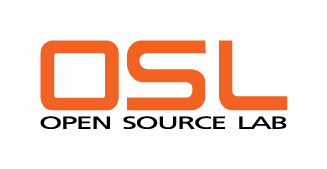'NE2000 ISA clone FAQ'
How to deal with ISA Plug n Play cards and still have a shread of sanity left at the end of the day.
In the beginning ....
Plug and Play (PNP)
After the jumper, but before PCI there was PNP. When it was new it was a disaster. It hasn't gotten much better. It was just another weak attempt to emulate the simplicity of MAC hardware. ISA cards have two modes; jumpered and jumperless.
Jumpered
YOU must physically move a jumper on the card to change configuration
Jumperless'
A Dos program is used to write the config to a flash memory on the board itself. This emulates a jumpered device. In this mode a device is usually NOT in PNP mode.
- EISA. Don't ask.
The ISA Board config problem.
- There are two kinds of basic ISA boards. The ISA boards with jumpers and those without. A board with jumpers is pretty straightforward. Read the ISA board (If you can), and place the jumpers. If the board is especially cheap, the jumpers will not have any marks or writing near them. Your next step would be to Google the ISA board by the chipset number.
The ISA Ethernet board comes in a number of manufacturers chips. Most smaller manufacturers buy chips from a large chip house and rebrand them as their own.
If you look at the number of drivers that smaller Linux distributions come with, you will notice there are not many drivers. These many drivers cover many different network chips. Here is a list of the most commonly found NE200 chips.
- Realtek 8019
- Realtek 8029
- Anthem/Novell NE2000
- SMC EZ
- DAVICOM DM9008F
- WINBOND W89C904AXF
- WINBOND W89C904F
- WINBOND W89C905F
- WINBOND W89C906F
- WINBOND W89C906F
- UMC UM9003AF
- UMC UM9007
- UMC UM9008
- AT/LANTIC (Allied Tellisys)
- Tips
"Don't use addresses 0x300 or 0x320 for NE2000 type cards." [Ethernet Howto] Most ISA modules accept parameters like io=0x340 and irq=12 on the insmod command line. It is REQUIRED or at least STRONGLY ADVISED that you supply these parameters to avoid probing for the card. Unlike PCI and EISA devices, there is no real safe way to do auto-probing for most ISA devices, and so it should be avoided when using drivers as modules. [Ethernet Howto]
There are only two major pieces of information needed for configuring the ISA PnP card.
1. IRQ. The Interrupt Request. A number between 2 and fifteen. Interrupts 3 and 4 are for serial ports. Five is for a second printer port or a sound card. IRQ 6 is used for the Floppy drive controller. IRQ 7 is sometimes used for sound cards but most often used for the first parallel, (printer) port. IRQ 8 is for the Real Time Clock, Don't mess with this one.
IRQ 9 is a mutant interrupt, unlike any other. IRQ 9 IS IRQ 2 in disguise. I don't think there is a network card alive today that will allow you to use IRQ2, but 9 is OK almost always. Now we come to my favorite of all interrupts. Number TEN. More to come...
2. The ADDRESS. The I/O address is the place where your ISA board has been told to live either by a jumper or by a configuration program.
3. FIRST Turn OFF Plug and Play in BIOS.
Things you should have learned in school, (had you been paying attention).
1. PORT SENSING Newer Ethernet cards will sense the active port Twisted Pair, Co-AX. Older cards must be jumpered or tweaked with the setup software. 2. Connectors.
10base5 Distance 500 meters Connector DB15 Male. If your network card has what looks like a "GAME" connector on it That is 10 base 5. not used for much anymore. But the 5 stands for 500 meters, which is how long the wire can be to the next ethernet port. 10baseT Distance 100 meters. Connector: RJ45 10base2 distance 200 meters. Connector: BNC Barrel tubular shaft protruding from your ethernet card
3. Fully compatible with Novell NE2000. Thats what so many cheap Ethernet cards say.
Credits and links:
The ISA PNP FAQ http://www.roestock.demon.co.uk/isapnptools/
NE2000 Clone Configuration programs http://www.corbina.ru/~gasya/homelan/drivers/ne2000.htm
Linux Ethercard Status, Diagnostic and Setup Utilities http://www.scyld.com/diag/index.html

